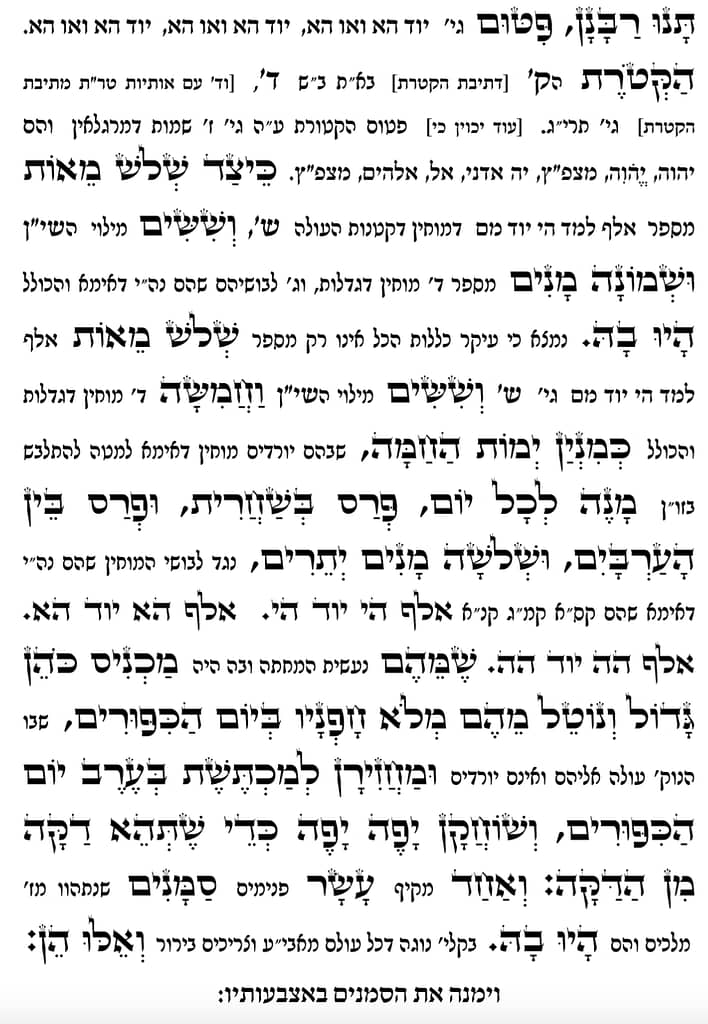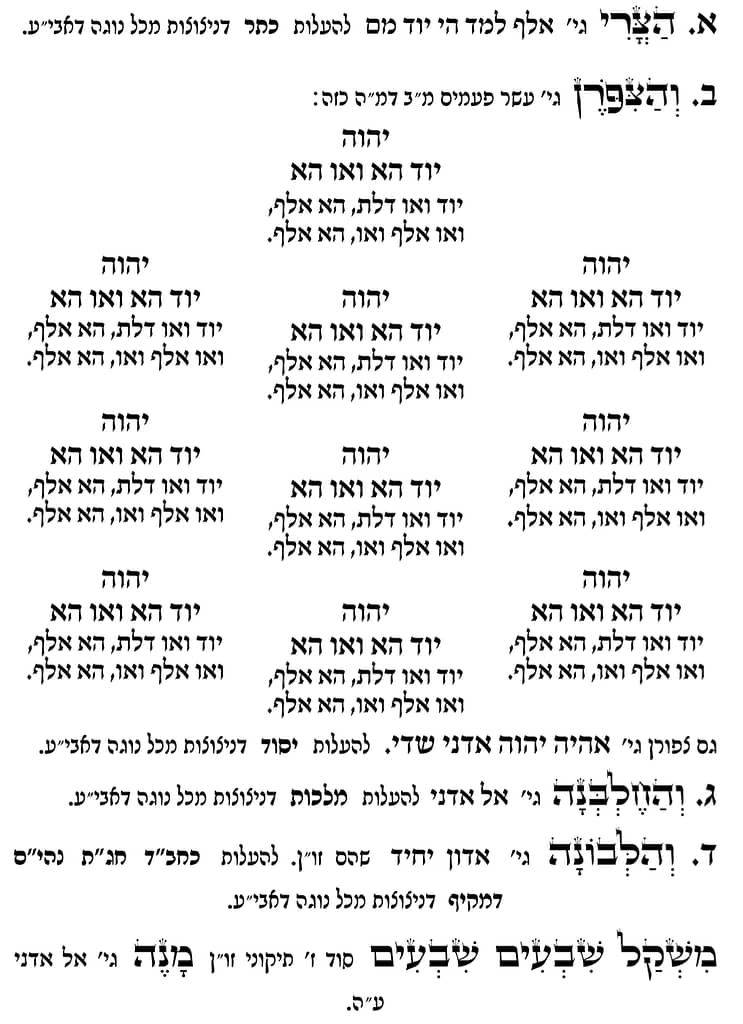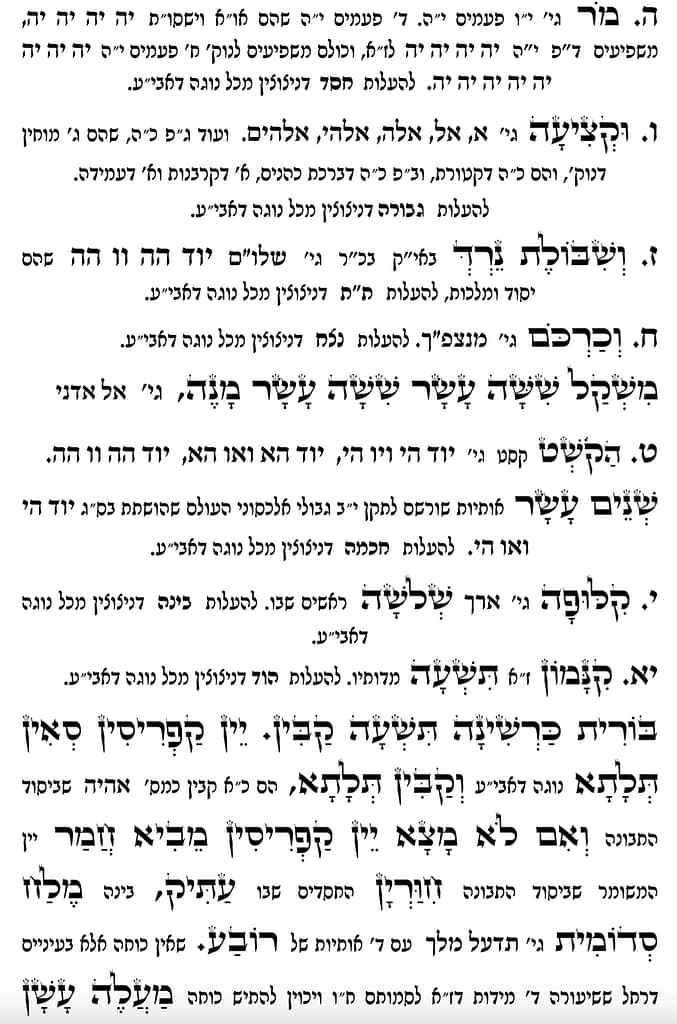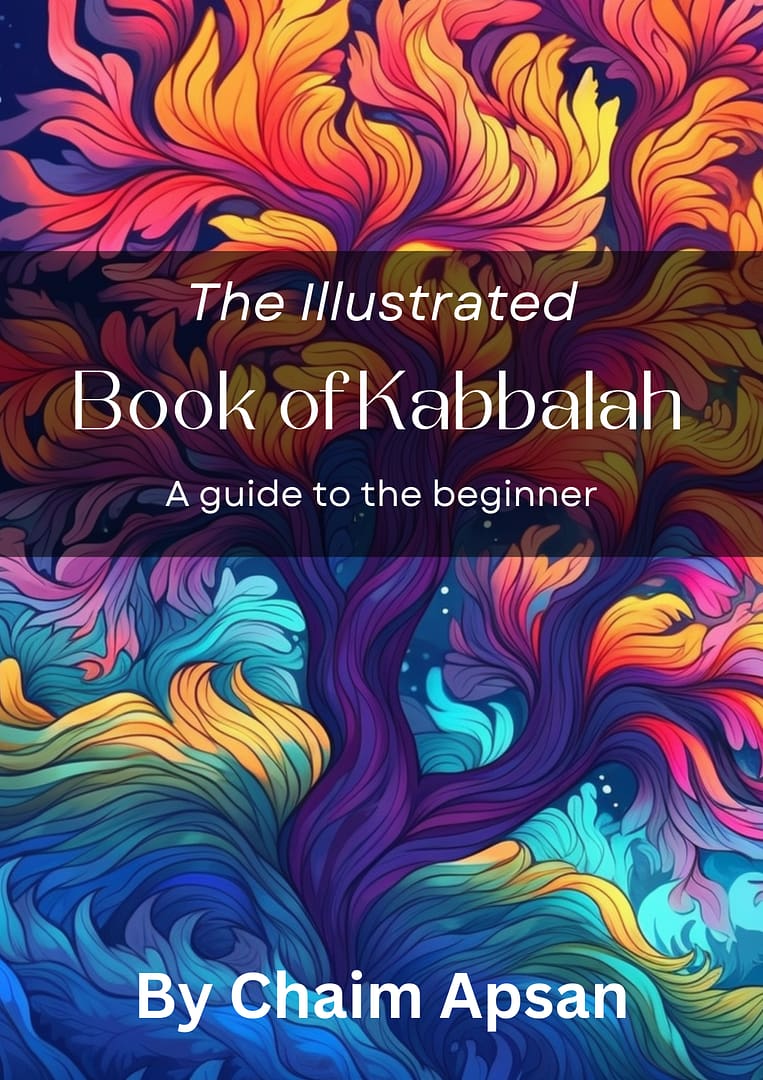The Pitum HaKetoret (incense service) was the most elevated part of the Holy Temple and made the one offering it incredibly rich
The Pitum HaKetoret is a Mitzvah from the Torah, mandating the daily burning of incense in the “Beit Hamikdash” (Temple of Jerusalem). After the destruction of the Temple, the physical enactment of this commandment ceased. However, its essence is preserved through the ritual reading of its description as inscribed in the Torah.
Pitum HaKetoret (also known as Tikkun HaKetoret), or the “Compounding of the Incense,” refers to a specific section in the Torah (Shemot 30:34-38) and another from the Talmud. It describes the precise formula and ritual associated with preparing the sacred incense used in the Temple in Jerusalem. The text is recited daily in many Jewish communities, particularly in the prayers of Shacharit, both in the beginning and the end, and at Mincha before the Ashrei Psalm 145.
Few people are aware that this passage carries incredible spiritual power, echoing the sacred rituals of the ancient Temple. While the Temple service may be suspended for now, the recitation of the Pitum Haketoret is in line with the prophetic words of Hoshea – “instead of bulls we will pay with our lips” – our prayers serve as spiritual offerings in the absence of physical sacrifices.
In other words: they still have the same effect in the spiritual realms.
The Zohar HaKadosh (in ויקהל דף רי “ח ע” ב) elaborates in detail on the virtues of this reading. Rabbi Shimon (Bar Yochai) emphasized the immense value of the Pitum HaKetoret, suggesting that if people recognized its significance before the Blessed Holy One, they would cherish each word as if it were a golden crown upon their heads.

Origins of the Pitum HaKetoret
Before delving into the custom of writing the Ketoret on Klaf (parchment), it’s important to understand the significance of daily recitation of the Pitum HaKetoret. The Beit Yosef (Orach Chaim 133) notes that this practice, dating back to the Siddur of Rav Amram Gaon in the 9th century, is entrenched in Jewish liturgical tradition. Its recitation is akin to other passages about the Temple services in our daily prayers, symbolizing the sacrifices we can no longer perform physically.
Way earlier, the Talmud mentions that when Moshe Rabbeinu ascended Mount Sinai to receive the Torah, he was gifted with various secrets from the angels, including the secret of the Ketoret (incense) from the Angel of Death. This gift was significant as the Ketoret was known for its power to nullify evil decrees, even those as severe as death.
This aspect of the Ketoret is especially highlighted in the context of its use by Aharon HaKohen (his brother) to stop a plague among the Israelites in the wilderness, as per the Talmudic teaching in Shabbat 89a. The Ketoret’s composition and its spiritual significance, as explained in Kabbalistic teachings, indicate its role in overcoming death and evil, and its association with the rectification of imperfections in the universe.
We will see that soon.
This revered text details the precise ingredients of the incense meticulously prepared by the “Cohen Gadol” (The High Priest) initially for the “Mishkan” (Tabernacle) and later for the “Beit Hamikdash.” In pursuit of fulfilling this mitzvah (commandment) in a manner deemed “Mehuderet” (more perfect or precise), it has become customary to read this passage from a scroll hand-scribed by a scribe on parchment, thereby honoring the tradition with great reverence and authenticity.
Ingredients of the Pitum HaKetoret, 11 and not 10
The Pitum HaKetoret blend was meticulously crafted, incorporating balm, onycha, galbanum, and frankincense, each in equal measure at seventy maneh. Additionally, myrrh, cassia, spikenard, and saffron were added, each weighing sixteen maneh.
The mixture also included twelve maneh of costus, three maneh of aromatic bark, and nine maneh of cinnamon. Integral to the recipe were nine kabin of Carshina lye and Cyprus wine, totaling three se’in and three kabin. In the absence of Cyprus wine, strong white wine was an acceptable substitute. Further enhancing the blend were a fourth of a kab of Sodom salt and a minute quantity of maaleh ashan.
Rabbi Natan of Babylonia suggests a small addition of Jordan amber. However, incorporating honey rendered the incense unusable, and the omission of any spice carried the severe consequence of the death penalty.
Rabbi Shimon ben Gamliel clarifies that the balm is simply the sap extracted from the balsam tree. The inclusion of Carshina lye served a specific purpose: to refine the onycha, enhancing its fragrance. Cyprus wine, used to soak the onycha, was chosen for its ability to impart a strong odor. Although the water “of the legs” was equally suitable for this purpose, it was not used in the Temple out of respect.
Our Jewish sages also teach that when the incense was offered, a miracle would happen and the entire country would be filled with its fragrant scent.
The double-kavanah of the Pitum HaKetoret
Following the Shir Shel Yom, it is a widespread custom to recite the Pitum HaKetoret, which is typically introduced by the prayer Ein K’elokeinu, and it ends before the Aleinu prayer. There are two primary reasons for this practice:
- Firstly, the Pitum HaKetoret symbolizes the incense that was ritually offered in the Temple both in the morning and in the afternoon.
- Secondly, its recitation ensures that every Jew engages with rabbinic teachings on a daily basis.
In the Zohar (part 2, 212:2), the Chazal laud the recitation of Pitum HaKetoret, highlighting its protective power against various misfortunes. However, there’s a cautious note regarding its recitation: it’s vital not to miss mentioning any of the incense’s spices.

This concern led to its omission on weekdays by the Ashkenazim, as the Rama (132:2) noted, to avoid hurried omissions by those rushing to work. In practice, most poskim agree that extreme meticulousness isn’t necessary, yet it’s advisable to recite the passage from the Siddur to ensure no word is skipped (Beit Yosef; Mishnah Berurah 132:17). The Ben Ish Chai says it’s good to count the 11 ingredients using the fingers.
The prayer service typically concludes with the Aleinu prayer. This custom is deeply rooted in the desire to reinforce faith in Hashem and the anticipation of redemption, especially before encountering foreign beliefs and deities in daily interactions (Bach 133).
Click here to order the Tikkun HaKetoret.
And here we have the double-kavanah of the Tikkun HaKetoret:
1. Kabbalistic aspect of the holy incense to raise the sparks from the Sitra Achra
In Shaar HaKavanot the Arizal teaches that, because we have extra work to lift up the sparks from Assiyah to Yetzirah, to Beriyah to Atzilut (hence the length), we must say the Ketoret for 3 main purposes:
- Remove the berurim (the parts of the fallen vessel and sparks that must be lifted) from the Sitra Achra which attached itself to it, during the Korbanot (sacrificial texts).
- Protect these berurim from the clutches of the Sitra Achra when raising them.
- Protect the light we bring down to the spiritual realms after the Amidah.
There are a series of Kavanot to take out the 11 parts of the berurim which were snatched by the Sitra Achra, which of course, correspond to the 10 Sephirot + 1 Makkif (surrounding light). These should be used whenever reciting the incense service.
We actually recite the Ketoret during prayer service 3 times, twice in the morning and once in Mincha, before the Amidah and we cannot overestimate its value.
And, of course, here are the Kavanot from the Baraita with the 11 ingredients:




2. Segulot of the Holy Incense (also called Tikkun HaKetoret)
Besides the great value in reciting the Incense service during the regular daily tefillah, there’s a well-known Segulah to say the Pitum HaKetoret anytime during the year.
Furthermore, according to Rav Segoulot Israel, the recitation of the Pitum Haketoret is attributed with a remarkable array of benefits. These include the eradication of epidemics and severe illnesses, protection from oppressive regimes, inviting blessings in one’s endeavors, safeguarding from afterlife suffering, overcoming negative forces (The Sitra Achra, סטרא אחרא), nullifying sorcery, dispelling harmful thoughts, and facilitating enjoyment in both this world and the hereafter. Additionally, it is believed to avert harsh decrees, improve one’s perception in the eyes of others, and bring about prosperity.
It’s also taught by many Tzaddikim that reciting it faithfully in the morning and evening assures one of safety throughout the day, protection from punishments in the afterlife, and a portion in the World to Come.
The incense is considered even greater than prayer, since it has the power to purify a person from all sins.

Rabbi Moshe ben Machir, a contemporary Kabbalist of the Arizal in Safed, emphasized in his work Sefer Hayom the importance of writing the Pitum Haketores on kosher parchment in Ktav Ashuri script. His directive for its recitation, with great focus in the morning and afternoon, is accompanied by his personal assurance of its protective powers, as indicated by his statement, “and I am the guarantor”. This is one of the earliest recommendations for writing the Pitum Haketores in parchment with Safrut lettering.
The Kaf Hachaim, a 19th-century respected Kabbalist and Chief Rabbi of Turkey, further reinforces the value of writing the Ketoret in the style of a Sefer Torah, associating it with the promise of constant wealth, among other segulot. This tradition underscores the enduring belief in the spiritual potency of the Ketoret, transcending its historical and ritualistic origins to become a powerful tool in personal Avorat Hashem.
I’d like to also point out an interesting personal “coincidence”. I got a little pamphlet from Nahar Shalom with the Ketoret printed in nice lettering with some of the holy names of Hashem there. On the cover, it’s written that Pitum HaKetoret is Gematria 855, which (un)surprisingly, is the same numerical value as Charvot Barzel (“Iron swords”), the name of the operation to take out Hamas in this current war.
This lends credence to the fact that the Pitum HaKetoret is the spiritual fuel that is being supplied to our soldiers in this war.
Click here to order the Tikkun HaKetoret.
It is emphasized that the benefits of the holy incense can only be accessed when recited with full comprehension and intention. The Mishna Brura advises that one who knows how to learn should study the applicable Talmudic passages about the Pitum HaKetoret to understand its meaning fully. The Shulchan Aruch and other poskim recommend reciting the it before prayers, as it is believed to atone for sins, allowing praises and songs to ascend and connect.
You can find the text in any online Siddur like this one.
Final Remarks
Today, the Pitum Haketoret is widely observed, found in many synagogues and personal prayer items across diverse Jewish communities. While Halachic authorities continue to explore justifications for this widespread practice, the core focus should be on the significance of the Pitum Haketoret in daily prayers.
It’s not just about the physical form of the text – whether it’s written on parchment or not – but rather the importance of reciting it with proper concentration and understanding its profound role in Jewish liturgy. This perspective aligns with the concept of “Minhag Israel Torah Hi” – the idea that a well-established custom can hold validity, even if its origins are not explicitly justified.
The key lies in appreciating and upholding the spiritual essence of this age-old tradition.
The traditional Jewish practices surrounding the recitation of Pitum HaKetoret and the conclusion of prayer services with Aleinu prayer are deeply rooted in history, religious significance, and a collective desire to maintain a connection with ancient rituals, if you will. There are also many Kabbalistic principles surrounding this order.
The inclusion of the Aleinu prayer at the end of the prayer service is a strategic and thoughtful practice aimed at reinforcing faith and preparing the Jew for the secular world outside the realm of prayer. This prayer serves as a spiritual armor, guarding against the influences of foreign beliefs and ideologies encountered in everyday life, and a protection against the Sitra Achra.
These sources collectively underscore the profound spiritual significance of the Pitum HaKetoret in Jewish tradition. It’s not merely a ritual but a deeply symbolic practice, embodying themes of purification, protection, and the elevation of prayers but a living power we all possess.

Pitum HaKetoret is more than just a ritual recitation; it’s a bridge between the physical world and spiritual realms, steeped in ancient traditions and enriched by deep Kabbalistic secrets. Whether as a protective segulah or a means of spiritual elevation for the Berurim we have to lift, its significance in Jewish thought and practice continues to resonate through the ages, and remains one of our nation’s favorite segulot.
May we live to see the reinstitution of the Pitum HaKetoret in our Holy Temple soon in our days.
Click here to order the Tikkun HaKetoret.













